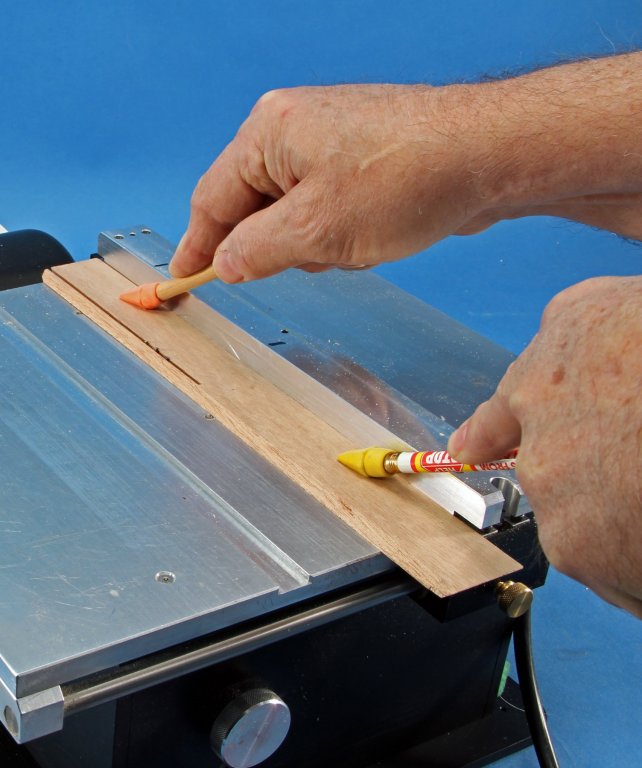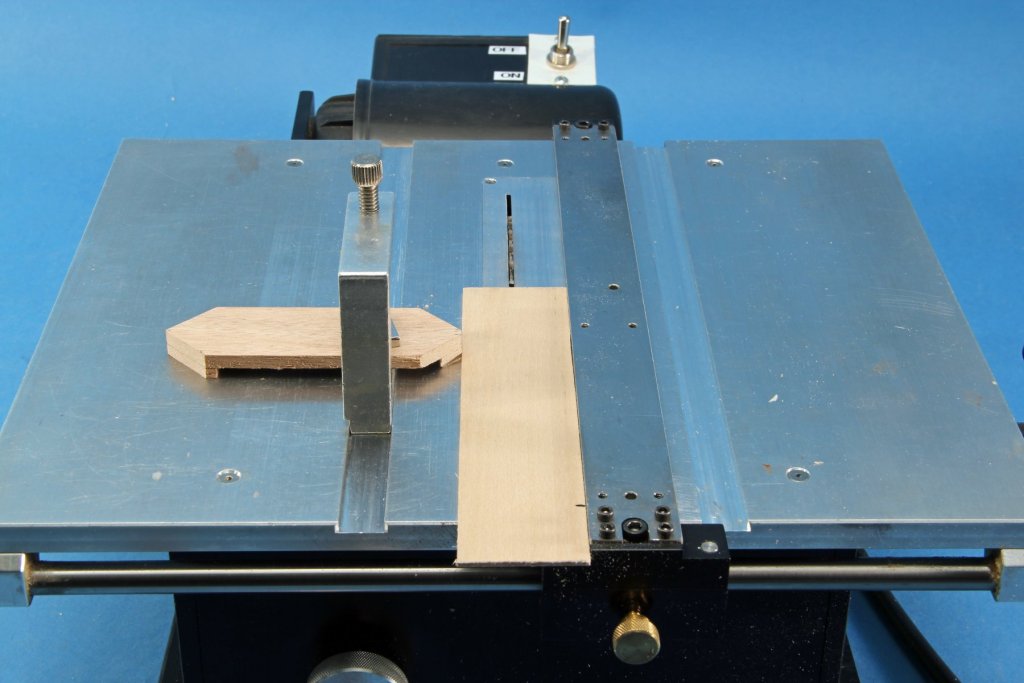-
Posts
3,029 -
Joined
-
Last visited
Content Type
Profiles
Forums
Gallery
Events
Everything posted by kurtvd19
-

Steamboats and other rivercraft - general discussion
kurtvd19 replied to Cathead's topic in Nautical/Naval History
There is an article linked below from the Institute of Nautical Archaeology (INA) an organization member of the NRG, about a hull survey done in Fairbanks, Alaska of the Steamboat Nenana a museum boat in Pioneer Park. This might be of interest to the followers of this forum topic. There will be an expanded article in the next issue of the INA Quarterly and I will link it when available. Kurt https://nauticalarch.org/first-look-at-a-rare-northern-steamboat/- 281 replies
-
- Steamboats
- riverboats
-
(and 3 more)
Tagged with:
-

Byrnes table saw questions
kurtvd19 replied to alde's topic in Modeling tools and Workshop Equipment
I agree 100% with Keith. Kurt -
Eric: I went over the Bertrand info too with the same results. Also checked info on the the Arabia and the original data on the Heroine - but as Glenn Greico explained several times in his build log Kevin Crissman was routinely digging up facts as Glenn built the model. I also checked Glenn's build log and there is no evidence that he simulated caulking anyplace on the model and his models contain all the known details. I will be surprised if any info comes back showing that caulking was used. Kurt
-
Chris: As far as I know it was just paint as many hulls were white. I think white might have been used more than black actually. I have never actually read anything about hulls or decks being caulked. All sources I have read say the hulls were fitted with smooth tight joints between the planks as well as the decks. Decks did have camber for water run off - which would only be rain as riverboats were not likely to get their decks wet otherwise in the protected rivers. You have my curiosity aroused and I will be contacting some nautical archaeologists about this issue of caulking. Kurt
-
Chris: Riverboats were painted. A lot of white paint was used for the superstructure and hulls but many hulls were black. The hull is hardly visible on most riverboats so this isn't very important - pick what you want. Decks were commonly red, brown and some green. The roofs were covered with tar paper so they were grayish black to black - the older the grayer. There are some great riverboat builds here - do a search for "Chaperon by Blighty" "Chaperon by Ron Grove" "City of Monroe by cborgm" "Steamboats and other river craft - a general discussion" andChaperon Sternwheeler Steamer 1894 by Mike Dowling These build logs will show you colors used and discussions about colors. Kurt
-
Chuck: Testor's also makes the decal papers. I have used the Testor's product with great success. The only problem is that printers do not print white but as it doesn't appear that you are using white it's not a problem. The print your own decal papers must be sealed after being printed with an ink jet printer or the inks will lift when wetted to apply. Testor's (and others) sell the clear coat in a rattle can. As with all decals they need to be applied over a smooth surface and dull or matt paints need to have some clear gloss applied first then the decal applied and then overcoated with dull coat or matt coat to match the model's surface. The clear overcoat also hides the edge of the decal film - as thin as it is w/o the overcoat you can see it. http://www.testors.com/product-catalog/testors-brands/testors/tools/decals/ Kurt
- 269 replies
-
- Queen Anne Barge
- Syren Ship Model Company
-
(and 1 more)
Tagged with:
-
Airbrush the screen. I know somebody that would do it for you if needed. Kurt
- 1,449 replies
-

Byrnes table saw questions
kurtvd19 replied to alde's topic in Modeling tools and Workshop Equipment
Al: Check the blade for flatness using a piece of plate glass or something that is truly flat. If it's not flat get rid of it. If the blade is burned the metal's no good but if it's just "burned on" resins from the wood it can be cleaned up - if it's still flat. The clamp I used for the strip jig is an old aluminum X-Acto clamp. The portion that fits into the groove on the saw had to be narrowed, but a carbide tipped blade on the Byrnes saw did the job w/o any damage to the blade. Let us know how your next try comes along. Kurt -

Byrnes table saw questions
kurtvd19 replied to alde's topic in Modeling tools and Workshop Equipment
Al: You didn't mention the blade being used - if you are using a fine slitting blade it's probably heating up, warping and causing the binding. However with you being right handed use the fence on the right side of the blade. A thin slitting blade with many teeth has a tendency to heat up because the blade doesn't have any set to the teeth and the sawdust isn't ejected like with a true wood cutting blade. Follow the attached photo and you will not have binding (except from a hot, warped blade). Using the fence as shown makes it safer too as the cut off piece also falls away from the blade. If "trapped" between the blade and fence the off-cut can be sent back at the operator by the blade's rotation. If you are cutting a bunch of strips of the same width use a set up like in the 2nd photo - it assures each strip is the same width in a safer manner. The guide on the left must be well forward of the blade - it's just used to set the width of the cut - the wood is guided just as shown in the first photo. Hope this helps. Kurt -
Elijah: You need to make sure that the joints do not touch the wood. If they do, capillary action can smear glue to any contacting surface. The professional jigs have a gap in the corners where each plane of the jig meets another. A 1/8" wide x 1/8" deep rabbit on each piece of the jig before you assembled it would do the job. If it's just screwed together no problem - unscrew, make the rabbit cuts and reassemble. Otherwise you will need to secure something to the jig pieces to provide a space at each intersection of the wood pieces. You need to keep it square so cover the entire wood surface except for the gap at the joints. If you can disassemble it but can't make the rabbit cuts, bring it to my shop and we can get it done. Kurt
- 701 replies
-
- phantom
- model shipways
-
(and 1 more)
Tagged with:
-
ER: On line works for joining and for purchases. Link to membership = http://www.thenrg.org/join-the-nrg.php The NRG store has a link right from the MSW home page - upper right corner of the tool bar - on some themes it's under "other" As to the lack of disc drives we are checking out USB Flash Drives. Roger: Thanks for pitching in. Kurt
-
The shop notes books are compilations of some of the Shop Notes that were originally published in the Journals. Shop Notes 1 (the original) is from the first 25 years of the Journal. Each Shop Note was previously printed but spread out over 25 years. The Shop Notes 2 is comprised of Shop Notes from 1981 to 2005. There are no duplication between the books. The great thing about the Shop Notes books is the information is in a book and one doesn't have to go looking for each subject covered. If you want to see the Shop Notes on blocks they are all together rather than spread over 25 years worth of Journals. Some consider the Shop Note books to be a must have for all modeler's libraries. If your budget allows I would get the CD's and the SHop Notes. I have them in my library and other than the member discount I paid full price for them - I considered them as essential information. But, please, others pipe up here as this is only my opinion and others should give theirs. Kurt
-

My Favorite Masking Tapes
kurtvd19 replied to P_Budzik's topic in Painting, finishing and weathering products and techniques
Paul: I just got done testing some of the tapes you showed in the video. The FBS K-UTG Gold Tape is my new go to for fine masking. It will replace the 3M Fine Line I have been using. The FBS Autografix tape is great too. It's far better than anything except the K-UTG Gold for routine taping and for taping over the K-UTG Gold for wider coverage - and the low cost is appreciated. The Pro Mask dispenser will be well used on the larger models. Thanks for your fine videos and this one on masking was outstanding. Take care, Kurt -

My Favorite Masking Tapes
kurtvd19 replied to P_Budzik's topic in Painting, finishing and weathering products and techniques
Paul: Another excellent video - with excellent information. Thanks, Kurt -
Griphos: Go to your local library and see if you can get the book through the inter library loan system. Their network of libraries can locate a library that has the book and it's sent to your library for you to check out. They say that sometimes there can be a nominal charge but I have yet to run into a charge. Great way to check out a book before buying it. Kurt
-
Speaking from experience when these GB publishing companies fold and then reorganize they do not recognize their previous loyal subscribers and do not honor the remaining subscriptions. Start all over and then hope you get all you pay for because again history shows they have a very poor record of fulfilling the new subscriptions before they fold again. Kurt
About us
Modelshipworld - Advancing Ship Modeling through Research
SSL Secured
Your security is important for us so this Website is SSL-Secured
NRG Mailing Address
Nautical Research Guild
237 South Lincoln Street
Westmont IL, 60559-1917
Model Ship World ® and the MSW logo are Registered Trademarks, and belong to the Nautical Research Guild (United States Patent and Trademark Office: No. 6,929,264 & No. 6,929,274, registered Dec. 20, 2022)
Helpful Links
About the NRG
If you enjoy building ship models that are historically accurate as well as beautiful, then The Nautical Research Guild (NRG) is just right for you.
The Guild is a non-profit educational organization whose mission is to “Advance Ship Modeling Through Research”. We provide support to our members in their efforts to raise the quality of their model ships.
The Nautical Research Guild has published our world-renowned quarterly magazine, The Nautical Research Journal, since 1955. The pages of the Journal are full of articles by accomplished ship modelers who show you how they create those exquisite details on their models, and by maritime historians who show you the correct details to build. The Journal is available in both print and digital editions. Go to the NRG web site (www.thenrg.org) to download a complimentary digital copy of the Journal. The NRG also publishes plan sets, books and compilations of back issues of the Journal and the former Ships in Scale and Model Ship Builder magazines.




